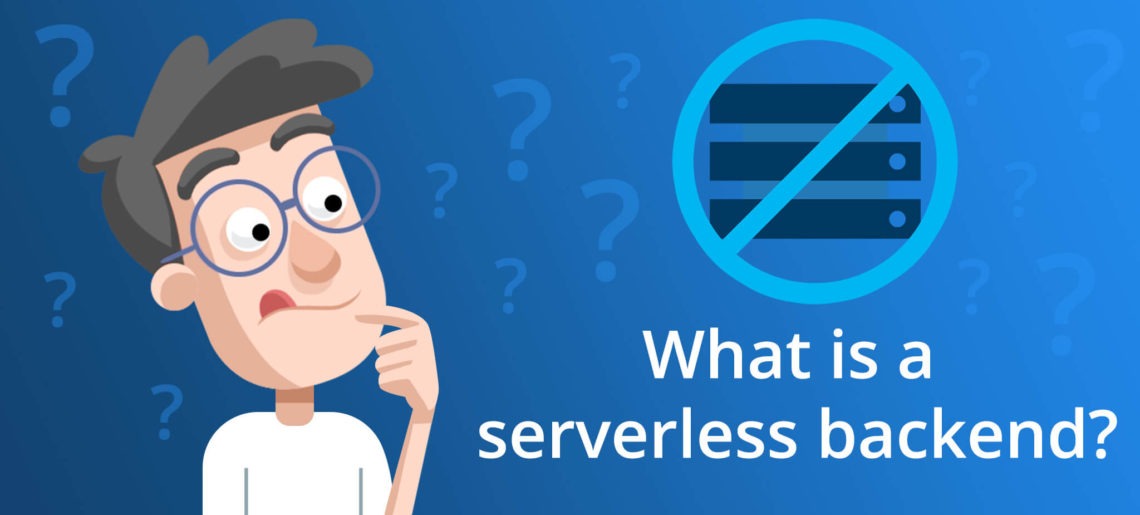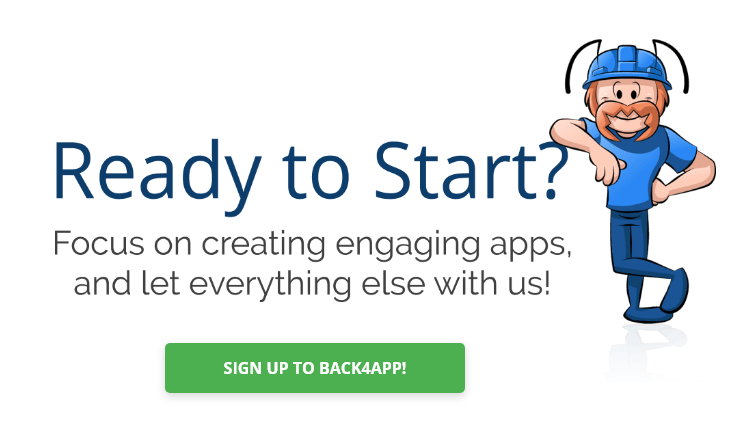What is a serverless backend?

A serverless backend is a platform that eliminates or decreases the need for developers to handle complicated and time-consuming backend server functions. It allows developers to focus on frontend functionality and UX. Examples of serverless backend are BaaS – Backend as a Service and FaaS -Function as a Service platforms.
Here is what you will find reading the article:
- Why use a serverless backend?
- Examples of serverless backend
- Advantages & Disadvantages of a serverless backend
Want to know more? Please continue reading.
Contents
Why Should You Use a Serverless Backend?
Serverless computing comes with a variety of benefits, which traditional server-centric infrastructure or cloud-based systems cannot offer. When it comes to serverless architectures, many developers believe that these offer quick release times, more flexibility, and better scalability, all of which come at a reduced price. In the case of serverless designs, developers are free from the pressure of buying, provisioning, and handling the backend servers. But, serverless computing is not apt for every web application developer.
Reduce time to market
Developers wanting to lessen their market time and create flexible and simple applications that can be quickly updated and stretched may profit significantly from a serverless backend.
Costs
The costs for applications with unsteady usage will be decreased by serverless designs, with peak times oscillating with periods of little to no traffic. In the case of such applications, you may be wasting resources by purchasing a block of servers or an individual server that is always running and always available, even when not in use. The serverless architecture will immediately respond when required and will not suffer extra costs when not in use.
Examples of Serverless Backends
Back4app –> Backend as a Service
AWS Lambda –> Event-driven serverless computing platform
Kinvey –> Backend as a Service
Azure Functions –> Serverless computing service hosted by Microsoft Azure
What benefits do you get from a serverless backend?
No need for server management
Even though it reads ‘serverless’, this kind of computing actually happens on servers. However, developers have nothing to do with the servers. Instead, they are dealt with by the vendor. It lessens the investment, otherwise required in DevOps, which reduces costs and makes room for a developer to develop and scale up their applications without restrictions from the server capacity.
See a real-life example of how 1001 Apps Dubai outsourced DevOps using a serverless backend.
Outsource DevOps using a serverless backend
Reduced expenses as developers only pay for the server space being used
Pay only for what you use. A serverless application requires backend functions, that is only when code runs, scaling up automatically based on the necessity. Provisioning is real-time, and it is also accurate and dynamic. Some of the services are precise enough to break the charges into hundred-millisecond increments. Comparatively, in terms of a usual ‘server-full’ architecture, developers have to mention the server capacity they are going to require, and buy that capacity, irrespective of it being used or not.
See a real-life example of how VantageBP saved $500k using a serverless backend.
How VantageBP saved $500k using a serverless backend
Serverless systems are essentially scalable
The applications which are designed with a serverless infrastructure will automatically scale following the increase in usage or growth of the user base. If multiple instances are where an operation is required to be run, the servers of the vendor will start, run, and stop whenever necessary. They often use containers because the operations begin quicker if they ran recently. This will result in a serverless application to become capable of handling an unusually large number of requests as properly as it processes one request from an individual user. A traditionally set up application consisting of a definite amount of server space can be overloaded by an unanticipated increase in usage.
See a real-life example of how Two4Tea scaled their game to 55 million users using a serverless backend.
Scaling a game using a serverless backend
Fast updates and deployments are possible
The need for doing configuration in the backend or uploading codes to servers to launch an application’s working version is not required when using a serverless system. It becomes easy for a developer to upload small codes and launch a brand new product. As the application is a stock of operations which the vendor has provisioned and not a single gigantic stack, developers can upload code for one operation at a time or all at once.
This opens up the option to easily fix, patch, update or include new features to an application. There is no need to alter the entire application, but developers can simply update one operation at a time.
What are the drawbacks of serverless backend?
These are all the serverless backend pros and cons.
It becomes tougher to test and debug
It is challenging to reproduce a serverless surrounding to check the performance of code, once released. To debug becomes even tougher because developers lack the visibility of backend processes, and also since the application is separated into smaller operations.
New security concerns are introduced by serverless computing
It might not be possible, when the whole backend is run by the vendors, to completely assess their security, which can lead to issues for applications managing sensitive or personal data. Since separate physical servers are not allocated to the companies, serverless providers will mostly run code from many customers on one individual server at any given time. The machinery sharing problem with more teams is called ‘multitenancy’. The performance of the application can be affected by multitenancy and can lead to exposure of data if the multi-chartered servers lack proper configuration. However, multitenancy has almost no effect on networks that precisely sandbox operations and comprise an infrastructure that is powerful enough.
Serverless designs are not meant for processes that run long
This is a con that restricts the kinds of applications that can run cost-effectively in a serverless set-up. Since providers of serverless architecture charge for the amount of time code is run, it can bring more expenses, compared to a conventional one, to run an application with long-running processes within a serverless design.
Performance may be affected
Serverless code might require a ‘cold start’ when used because it has not been running continuously. The time required to boot may diminish performance. But, if and when a code is frequently used, the serverless provider keeps it prepared to be activated. On the other hand, a request that has not been used for some time is known as ‘cold start’.
Vendor lock-in is dangerous
When a vendor is authorized to offer every backend service for an application, it automatically raises the reliability of them. Establishing a serverless system with an individual vendor can impose difficulties in switching vendors if need be, especially because every vendor provides workflows and features that are slightly different.

What is a serverless backend?
A serverless backend is a platform that eliminates or decreases the need for developers to handle complicated and time-consuming backend server functions. It allows developers to focus on frontend functionality and UX. Examples of serverless backend are BaaS – Backend as a Service and FaaS -Function as a Service platforms.
Why Should You Use a Serverless Backend?
– Reduce the time to market
– Reduce software project costs
What are some serverless backend providers?
Back4app –> Backend as a Service
AWS Lambda –> Event-driven serverless computing platform
Kinvey –> Backend as a Service
Azure Functions –> Serverless computing service hosted by Microsoft Azure



